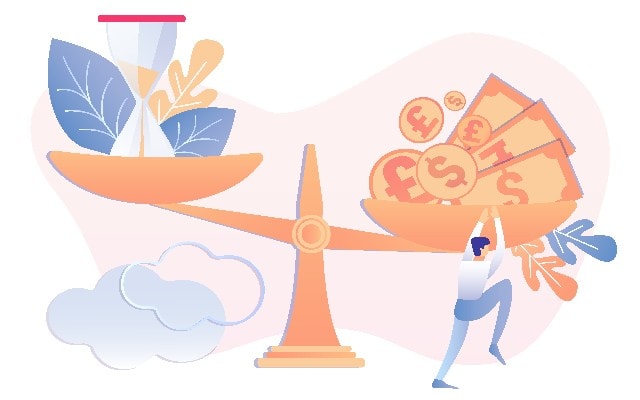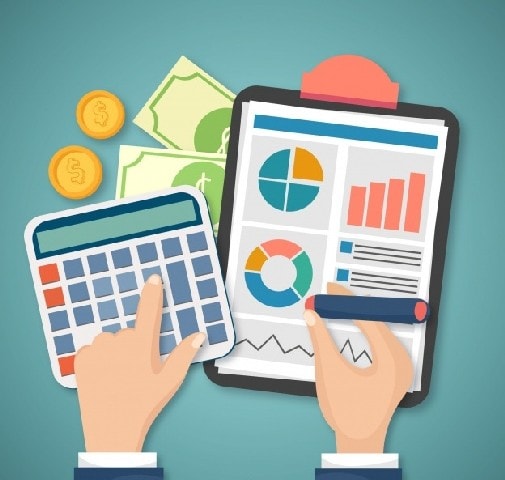Cost efficiency is the ration of the cost to the output. In terms of an organization, it is every business’s objective to lower their expenses.
It is the extent to which a company can achieve its desired results in the least amount of cost as compared to its competitors and any other alternatives.
Table of Contents
Cost Efficiency in terms of an Advertising Effort
Let us talk about cost-efficiency in terms of a company which is just about to incur its advertising expenses. During an advertising or marketing campaign, the goal is to augment the awareness as well as publicize the product or service. It is done in such a way that the maximum numbers of people are targeted while the costs are kept a minimum.
It is desirable to every firm that they maximize their cost-efficiency. It helps them achieve good product exposures for the least amount spent. A company retains its competitiveness in a market by regularly optimizing its costs.
It ensures its continuous growth as well. One of the chief factors which supplement the overall efficiency of a business is the implementation of constant control.
Cost Efficiency in terms of construction companies
Cost efficiency is a strategic choice for every company. Thus, it is a good idea for construction companies as well. It is because, in this sector, the clients are aware of their requirements as well as the fact that several rules and regulations guide the seller and the buyer. Therefore, in these scenarios, it is the price competition that is in full swing.
One must remember to factor in the competitive forces which are there in the industry while taking making any strategic decisions.
Strategic drivers that influence the decisions made by construction companies include skills-oriented, customer-oriented, and competition-oriented. The four competition-oriented drivers further include:
- Focus
- Differentiation
- Cost efficiency
- Defense or diversion against competitors
Cost efficiency is the commonly chosen strategic driver opted for by many companies. Clients decide between the options (contractors) based on the solutions presented by them and the manner through which they were given. The track records of the contractors are also considered. After all these considerations, from the shortlisted contractors, the cheapest bid is finalized.
How profitable is Cost Efficiency
Cost efficiency is an aspect of financial management and can eventually become quite confusing for many. It is observed that as the quality, i.e., the benefits that customers reap after purchasing from a company, increases, and the cost efficiency also increases. Higher or better quality means a higher price. Thus, cost efficiency has to balance.
Let us look at some of the use cases through which one can enhance the cost-efficiency.
- One can increase their cost efficiency by offering their products or services at the same or even the lower price or quality. For a company, this will help in increasing the profits for the same price. It will also help them establish their position in the market as a low-cost provider.
- Another method through which a company can improve or maintain the cost efficiency is by trying to improve the value of their products or services. It includes the offering of various benefits which the company deems can be useful for their customers. It will efficiently improve the customer’s perception as well while augmenting the value of their services or products. It will also help in reducing some of the threat from competitors. Through the increase in value, some businesses are also able to build a well-established and esteemed brand which can then proceed to sell their products or services at a rate that is higher than the industry standards.
- The third option is to improve both customer benefits as well as efficiency. This is a tricky and demanding path that requires a lot of effort. It requires both innovations as well as radical actions to be taken by the organization.
Steps through which the Cost Efficiency can be boosted
There are several ways through which the cost efficiency of a company can be promoted. Cost efficiency, as discussed, is a method through which a company aspires to do more with fewer efforts.
It is observed that an average business spends around 55 percent of its income on its products as well as services. In a sector like construction, a company can account for 70 percent of its revenue is spent on goods and services. This requires the need to be efficient in purchasing as well as subcontracting to make a significant effect.
The combination (relationship) between the client and the contractor is one of the factors that significantly affect the cost efficiency of the contractor. According to some studies, it has been observed that the profitability among similar types of projects largely depends on the client and project manager of the contractor. A mutually beneficial manner though which the cost efficiency can be enhanced is to rework on the client and contractors relationship as well as cooperation.
A promising methodology that lies in this sector is lean construction. It is the process of eliminating material waste. It also reduces the number of unnecessary procedures. As it is implemented, it helps in increasing efficiency in a very systematic manner.
Another method that has been known to show promising cost efficiency is the Integrated Project Delivery (IPD). It helps in improving efficiency as well as the process quality.
Amongst all of these efficiency-boosting methods, it is information management that stands out as the shared link. Other key factors that are of importance are BIM, network communication, and collaboration.
Cost Efficiency Components
The ingredients for cost efficiency vary from industry to industry. Let us look at some of the standard cost-efficiency elements.
1. Energy
It is a standard cost-efficiency metric for energy production. The cost per watt, if optimised, can help the company significantly. It can also opt for using solar panels. Here, it will include all the expenses which will be incurred to purchase, install as well as connect a solar panel system.
2. Marketing
Another standard cost-efficiency metric is customer acquisition cost. It is essential in the sales and marketing domain. Here, it will include all the expenses which will be incurred to acquire a customer to compare several marketing strategies.
3. Transport
The costs incurred per passenger and kilometer can be used to calculate and differentiate between various transportation alternatives. However, this does not include any secondary charges and expenses, such as the time consumed, in say, a slow transportation mode or the environmental impact and cost from pollution.
4. Manufacturing
Here, the cost incurred to produce one unit of a particular product according to its specification is the cost per unit. It is a fundamental metric in management accounting, which is further used to plan the production as well as determine the profitability.
How to carry out a Cost Efficiency Analysis?
It is the process of comparing relative costs and prices, which are giving the same outputs by utilizing different activities. Let us look at the steps of carrying out a cost-efficiency analysis briefly.
1. Select which of the outcomes you will be using for comparison in cost efficiency
Select the components which you will be analyzed to compare the activities. Remember that the consequences have to be the same. It also has to be something that you can measure or gauge accurately. You have to define the outcomes that are being measured clearly, and they have to be measured in the same way as well.
2. Measure the outcomes
Similarly, measure the outcomes for each of the activities decided. It is a crucial step in the cost-effective analysis of the events.
3. Calculate the costs incurred
The following step is to work upon calculating the costs that were incurred in each activity. It is important to remember to factor in all the costs that were associated with every stage of the events. These further include the cost of the time that was spent by individuals or the staff to organize as well as implement the activities.
4. Divide the cost by the outcome
To analyze the cost efficiency for each of the activities, the total cost is divided, which you had calculated in the previous step by the result of the activities. It will show you which of the activity is more cost-efficient than the other one.
Wrapping it up!
In conclusion, there is no one single way through which cost-efficiency can be established or maintained. There are a lot of factors that go into it.
It requires a combination of techniques and tools. Technology is not the only factor that can help maintain cost efficiency in a company. A lot of segments, as well as elements, have to be taken into account when a company is trying to be cost-efficient.
Moreover, it is essential for businesses to regularly check on their cost efficiency and also manage customer perception.
Are you having any doubts about gauging the cost efficiency of your business model? Ask your doubts to the M91 team, and we will guide you in the process.
Liked this post? Check out the complete series on Business




